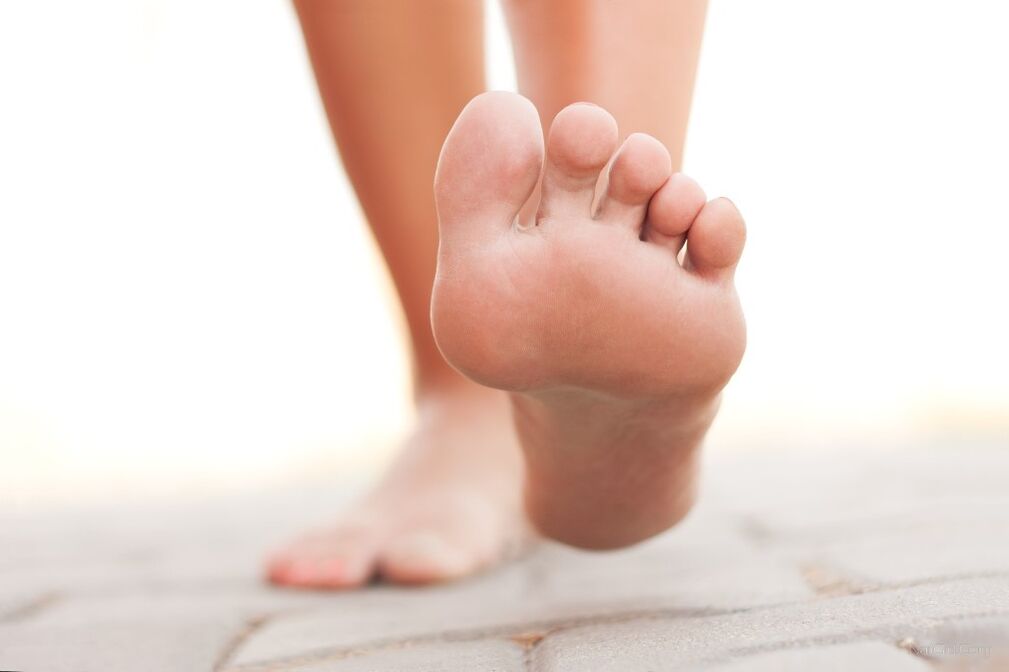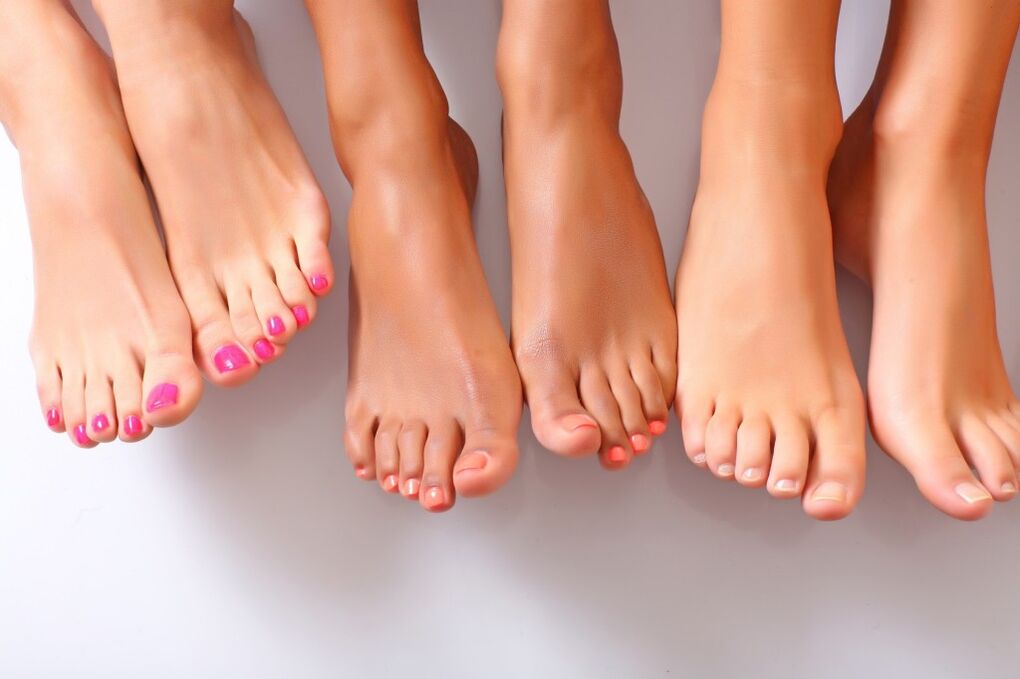
Nail fungus can also affect people who lead a normal and healthy lifestyle. Most fungi spread in saunas, swimming pools and on beaches. However, since the disease is not new, it can always be overcome with the help of folk remedies. According to statistics, people who lead a healthy lifestyle most often suffer from fungal diseases. They regularly visit places of active public recreation, where they are attacked by the virus. It is gyms, swimming pools and saunas that are the main spreaders of this disease.
Causes of nail fungus
It should be noted right away that nail fungus (onychomycosis in medicine) is a fairly stable type of infection. This disease affects the entire nail as a whole, destroying it and gradually moving to the skin. The causative agent is a common fungal infection that is quite easily transmitted between humans. Onychomycosis can affect the legs in a wide variety of areas. For example, you can once wipe your feet with a stranger's towel and deposit this unpleasant virus on your body. Therefore, when visiting public places of active recreation and sports, it is necessary to observe all the rules of personal hygiene. The inconvenience of the disease lies in the fact that it is not limited to the destruction of the nails, but gradually passes to the skin. Treating a skin fungus is fundamentally different from treating a nail fungus. If you find a fungus in yourself, in any case, immediately consult a mycologist. Only he can determine how to remove the fungus from your body. Nail fungus is often caused by fungal organisms called dermatophytes. The favorite place of these organisms are the toes. The thing is that people are used to wearing relatively tight shoes that create ideal conditions for the existence and growth of the fungus (lack of light, heat and moisture). Also, blood circulation in the feet is much worse than in other parts of the body, making it very difficult for our body's immune system to recognize and destroy such bacteria. The risk of contracting a fungal infection also increases:
- When working in the heat;
- In the presence of psoriasis;
- When wearing uncomfortable shoes with poor air circulation;
- In case of damage to the nails;
- With diabetes;
- Walking barefoot in various public places (baths, swimming pools, gyms);
- With a weakened immune system, you can catch toenail fungus;
nail fungus symptoms

The main signs of nail fungus on the legs:
- Deformed shape of the nail;
- The affected nail gradually darkens in color;
- The nail flakes off and becomes too brittle;
In addition, the affected nails often detach from their nail beds. In medicine, this abnormality is called onycholysis. Pain in the fingertips and a characteristic odor are the first symptoms of onycholysis. If a person with a fungal infection is not helped in a timely manner, the disease will persist and subsequently will only progress and develop. After the primary signs of the disease are discovered, a person needs to see a qualified doctor to determine how to treat nail fungus.
How do you recognize and identify nail fungus?
Many are interested in the question of how to recognize the fungus at home. To do this, you need to take a solution of potassium permanganate (potassium permanganate) and dilute it with water until a purple color appears. You need to lower your legs into this solution and hold them there for a while. Inevitably, in the presence of a fungus, brown areas appear on the nails, which indicates the presence of a fungal infection in the human body. After the procedure, the legs must be treated with a fifteen percent hydrogen peroxide solution. At the slightest suspicion, you should immediately consult a doctor.
We treat nail fungus with medication
Individual groups of researchers are certain that terbinafine-containing preparations are currently the most effective means of combating athlete's foot. The action of the funds is aimed not only at destroying the fungus, but also at restoring the nail and skin. Overall, the treatment time is about two to three months, but the final result of the treatment will only be visible after the new nail has grown back. The same drugs can treat the fungus on the hands. The course of treatment is similar. You also need to keep in mind that if the feet are frequently in a warm and humid environment, the fungus can return. The danger of the disease lies in the fact that the virus itself is unusually persistent, and in addition, it quickly develops immunity to the components of the active substances. Therefore, if the infection is not treated the first time, subsequent treatment with the same drug is impossible. The same applies to the recurrence of the disease. In this case, you will have to decide on a new drug and fundamentally different active ingredients.
We get rid of the fungus with the help of proven folk remedies
- Places affected by a fungal infection should be lubricated with a twenty percent solution of propolis. For maximum effect, you can wipe them down with onion pulp. To do this, you must first chop a few medium-sized onions and apply the resulting mixture to the damaged areas of the skin and nail.
- Mix equal parts alcohol and garlic pulp and dilute with a small amount of pure distilled water. The resulting mixture should be applied to damaged areas.
- Garlic compresses are no less effective. It is these compresses that cope with such fungal diseases that are poorly treatable with drugs. In addition to compresses, garlic should be taken orally.
- Patients should definitely drink garlic tinctures and garlic teas - they are great for nail fungus. The result is visible in five to six days.
- Another proven remedy is wine vinegar. The affected feet must be thoroughly washed and dipped in a bowl of wine vinegar. After that, you need to put on socks soaked in vinegar and go to bed in them.
- Since ancient times, nail fungus has been treated with a fairly simple, but effective method - walking through the dew in the morning. A half-hour walk in the morning dew relieves not only a fungal infection of the feet, but also corns, rashes, corns and others. After completing the run, the legs should in no case be wiped, they must dry themselves. To enhance the effect at night, you need to rub your legs with a piece of raw potato and massage the infected areas. You can use this method for no more than a month. But the first results will be visible in a few weeks.
- Crush the mint leaves with table salt and place the resulting mixture between the toes for an hour. Treatment should be carried out until the nail fungus has completely disappeared.
- Folk methods often involve the use of celandine and milkweed. A small bunch of milkweed is taken and poured with three liters of clean boiled water. The mixture is infused for several hours and must be wrapped in a blanket. After the decoction is infused, you need to lower your legs into it and hold it for thirty to forty minutes every two days. Euphorbia has an emollient effect that helps when clipping nails. Similarly, you need to prepare celandine, and it is also used.
- Lilac blossoms, which do an excellent job with nail fungus, have proven themselves. About ten grams of lilac flowers should be placed in a glass of alcohol and left for two weeks. The tincture is used to lubricate infected areas of the skin and nails.
- Another method involves using cocklebur leaves. From them you need to squeeze the juice and apply to the skin and nails.
- Finally, an antifungal remedy includes a variety of different herbs. Horsetail grass, blackberry leaves, verbena, calendula flowers and willow bark need to be mixed in equal proportions. From this mixture you need to take only ten grams and pour a glass of water. Put everything on fire and bring to a boil, then remove from the heat and let stand for three to four hours. With the finished broth you need to make lotions and apply compresses. To enhance the effect, one tablespoon can be taken orally three to four times a day.


















